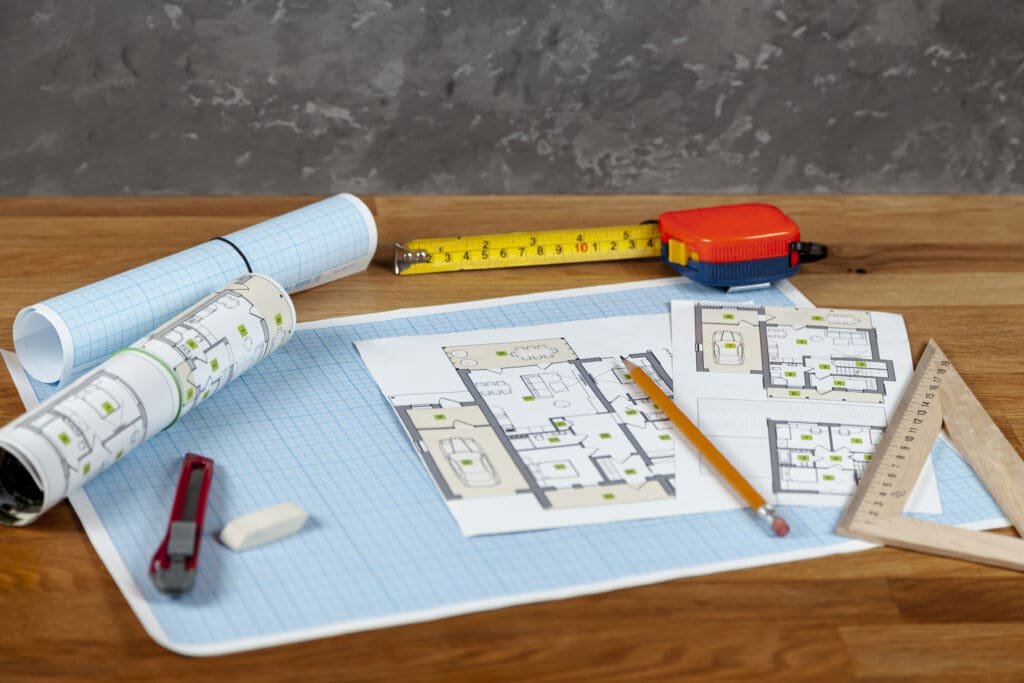Understanding Floor Area Ratio (FAR) in Urban Development
In the realm of urban planning and development, the Floor Area Ratio (FAR) emerges as a pivotal metric, guiding the harmonious balance between building volumes and land use. FAR is not merely a calculation but a regulatory tool that shapes our cities, influencing both the skyline and the spaces between buildings. This blog post delves into the essence of FAR, its purpose in planning, and the method to calculate it, integrating crucial keywords for a comprehensive understanding.

What is the Floor Area Ratio (FAR)?
Floor Area Ratio (FAR) quantifies the relationship between the total floor area of a building and the size of the land parcel it occupies. Expressed as a decimal, FAR is calculated by dividing the building’s total floor area by the plot’s total area. This metric serves as a gauge of a development’s density, where higher FAR values signify more substantial building volumes. By controlling FAR through zoning regulations, urban planners aim to ensure development is in harmony with environmental, infrastructural, and community needs.
The Role of FAR in Urban Planning
FAR plays a critical role in shaping the urban environment. It is a key component of zoning regulations, enabling cities to manage the density and form of development efficiently. By setting FAR limits, planners can influence a range of urban outcomes, from reducing congestion and preserving green spaces to managing stormwater runoff. The goal is to achieve a balanced development that respects the land’s capacity and the community’s needs, ensuring that buildings contribute positively to the urban fabric without overwhelming it.
Calculating FAR: A Step-by-Step Guide
Calculating FAR involves a straightforward process that assesses the potential building volume on a given land parcel. Here’s how it’s done:
Step 1: Determine Buildable Land Area
First, identify the total buildable land area in square feet, excluding non-developable sections like public streets, wetlands, and other restrictions. The formula is:
Buildable Land Area (B)=(Land Width×Land Depth)−Undevelopable Land (if any)Buildable Land Area (B)=(Land Width×Land Depth)−Undevelopable Land (if any)
Step 2: Determine the Floor Area
Calculate the area of each floor within the building, generally measured from the exterior walls. This includes all floors above the ground.
Step 3: Determine the Gross Floor Area
Sum up the floor area of all floors to find the gross floor area (G), which encompasses the total building volume.
Gross Floor Area (G)=Floor Area of 1st Floor+Floor Area of 2nd Floor+…Gross Floor Area (G)=Floor Area of 1st Floor+Floor Area of 2nd Floor+…
Step 4: Calculate the Floor Area Ratio
Finally, divide the gross floor area by the buildable land area to obtain the FAR:
The result is the Floor Area Ratio (FAR).
Floor Area Ratio (FAR) = (G)/(B)
Example of FAR Calculation
Consider a developer planning a two-story building on a rectangular lot measuring 100 feet by 200 feet, with each floor being 50 feet by 200 feet. There are no exceptional development constraints.
- Buildable Land Area: 100 ft×200 ft=20,000 sqft100 ft×200 ft=20,000 sqft
- Floor Area per Floor: 50 ft×200 ft=10,000 sqft50 ft×200 ft=10,000 sqft for each floor
- Gross Floor Area: 10,000 sqft+10,000 sqft=20,000 sqft10,000 sqft+10,000 sqft=20,000 sqft
- FAR Calculation: 20,000 sqft/20,000 sqft=1.020,000 sqft/20,000 sqft=1.0
This example illustrates a FAR of 1.0, indicating that the building’s total floor area is equal to the size of the plot.




